The organs and tissues of the body wear out and age over time, therefore, at the age of 50 to 60, a person begins to feel periodic pain throughout the body.However, there are diseases in which the aging of individual parts occurs much faster.The first symptoms of osteochondrosis in the cervical region manifest themselves up to 40 years, and the disease itself brings a lot of inconvenience.
What is osteochondrosis in the cervical region?
Osteochondrosis in the cervical region is a disease associated with the wear of the cervical vertebrae.The cervical column itself consists of 7 moving vertebrae and connective tissue in the form of intervertebral discs.Since the upper spine is not reinforced by a muscular corset, the neck is the most mobile segment.This is also facilitated by elastic connective tissue.All this contributes to the turn and the inclinations of the head.Inside the vertebrae and discs, there is a complex circulatory system and nerve endings.
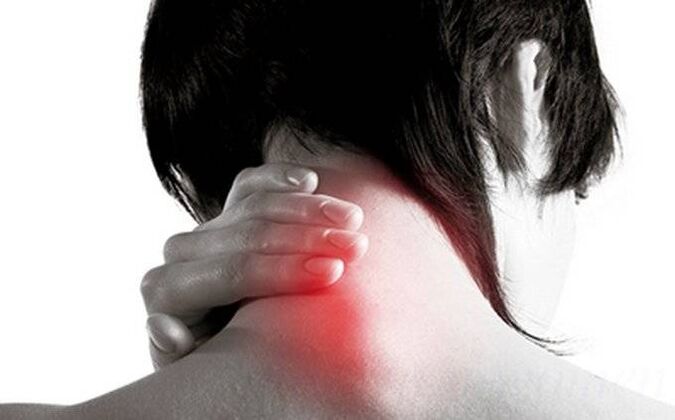
With excessive load on the neck, the intervertebral discs are abrasion, made less elastic.As a result, the vertebrae themselves begin to "leave".The incorrectly located vertebrae lead to a pinch of the nerves, to the deterioration of the blood circulation and the metabolism in the spine.
Symptoms
The symptoms of osteochondrosis in the cervical region are very diverse, as they are associated with nerve pinching and aggravating blood circulation.There are cases where, instead of the causes, the investigation is processed, but do not obtain results, it is therefore extremely important to properly diagnose the disease.
There are a number of general symptoms that manifest themselves in most of those who suffer from this disease:
- The burning pain in the neck, which intensifies during the change of pose, of sneezing, breathe deeply, turning the head.With a clear rotation of the neck, pain can cause fainting;
- Small coordination problems, which most often lead to an unstable approach;
- Damage of the Vireilles, which is not always accompanied by myopia or excessive fatigue of the eyeballs.Rice rivet waves and vacillating black dots are also characteristic.
- The deterioration of hearing, which is accompanied by a constant noise and a ringing in the ears;
- The headaches of a different nature, both burning at the back of the head, which spreads to the time part, as well as dull pain in the tanned arches and the parietal area, periodic dizziness;
- Constant fatigue;
- The problems of concentration of attention and memory, as well as significant deterioration of mental capacities, are mainly characteristic for advanced age.
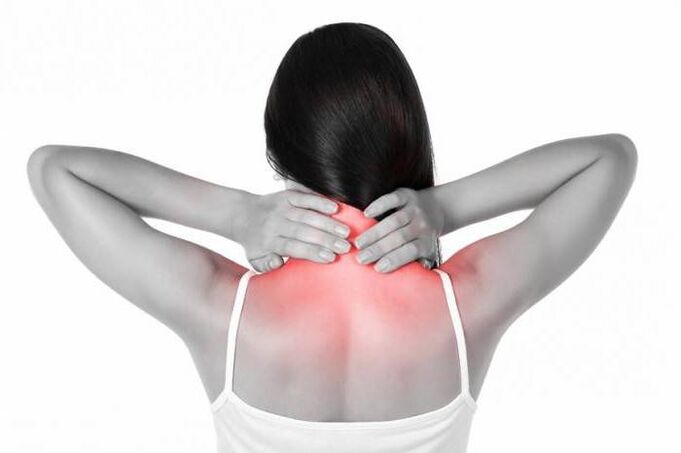
In addition, according to how the nerve is pinched, additional symptoms occur, which are no longer reflected on the head, but below: below:
- Picotments and numbness of the shoulder, arms and fingers.The side becomes numb, depending on where the neck is turned, and all the fingers are not tinted, but 1-2, by what type of finger, you can determine the problem with what type of vertebra.Less often, the pain is given to the legs;
- The pain is given to the shoulder and to the left side of the chest, including periodic cramps in the heart;
- Burning from the neck to the area between the shoulder blades;
Sometimes osteochondrosis also manifests itself on the appearance of a person: pain in the teeth, flange and dry skin of the face, snoring at night, a hoarse or weak voice
Causes of cervical osteochondosis
The most common cause of osteochondrosis is a sedentary lifestyle, so "white necklaces" are subject to this disease.Office employees have long been in an uncomfortable position, which is forced to maintain the spine, including cervical service.The absence of ability to make gymnastics periodically, in the development of the neck, leads to the degradation of intervertebral discs.However, excessively active sports can also cause osteochondrosis, in particular for lifting exercises, as the main load falls on the spine.With significant constant loads, the connective tissue begins to wash, this leads to osteochondrosis of different segments of the spine.
In addition to an active lifestyle or its absence, the cause of osteochondrosis can be:
- Bad nutrition, lack of vitamins and minerals, in particular calcium and phosphorus;
- Genetic predisposition.Osteochondrosis is not a hereditary disease, however, with the development of the fetus in the uterus, it may not have enough substances to form a bone system, which will affect the elasticity of the discs in adulthood.Or hereditary diseases of bone tissue can become a factor;
- back or neck injury;
- hypothermia;
- The problem of metabolism or hormones.
Degree of osteochondrosis.Why is this disease dangerous?
There are 3 degrees in the development of neck osteochondrosis, although in certain sources 4, recovery, after the elimination of a hernia, is also mentioned.However, such a development of the disease is considered to be quite positive, because there are no persistent disorders in the life system.
The first degree of the disease causes the slightest drawback, but it is precisely because of this that it is difficult to diagnose the early stages.This extent is characterized by a loss of elasticity and insignificant cracks in the intervertebral discs.This is expressed in the form of pain in the neck during the inclinations, the nature of the pain can be described as an electrical discharge which passes along the cervical segment.Also at this time, students expand, which makes it possible to determine the disease in the first stage.
The second degree of osteochondrosis is characterized by constant pain in the neck, which intensifies when the position of the head is modified, but it does not pass completely.At this stage, swelling of the neck is possible, because the intervertebral disc is narrowed under the vertebral pressure.The already existing places of tearing are developing and excess humidity begins to get out of the disc itself, which leads to swelling.Given that to this extent, the distance between the vertebrae is reduced, the first signs of nerves affect.Often suffering from neck osteochondrosis, people try to reduce pain, supporting their heads with their hands.However, the pain also extends to the head.
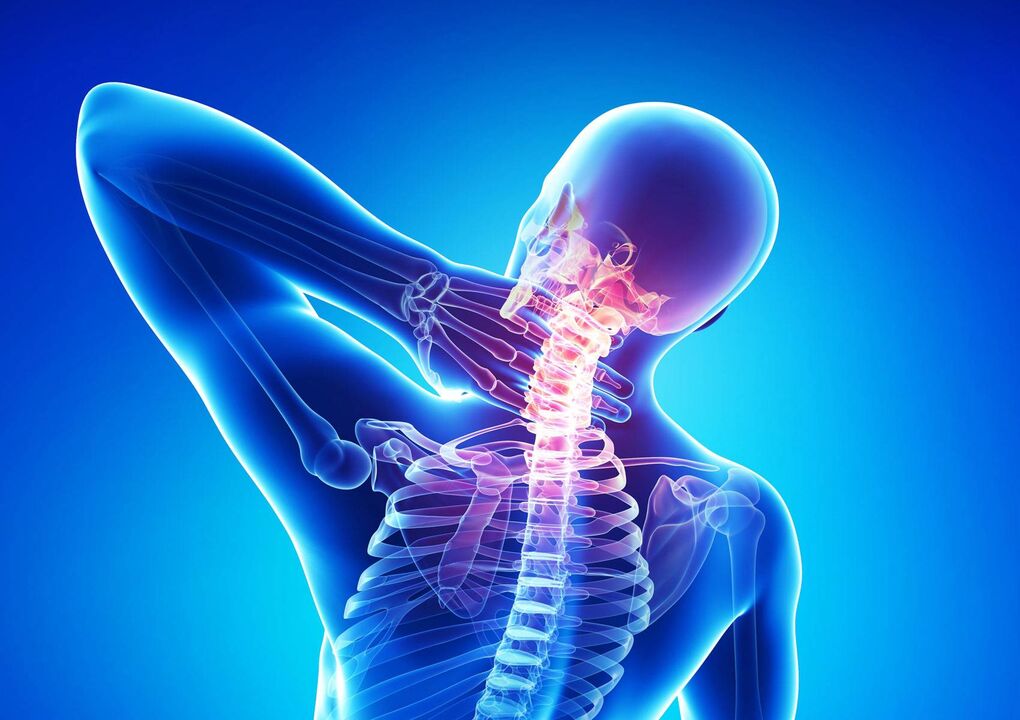
The third degree of development of the disease begins with the hernia of the disc.This condition was also called acute osteochondosis, when, due to pain in the neck, a person often loses awareness.Pain is given in members and the chest region, the approach becomes uncertain.In particularly difficult cases, there may be a partial loss of control over control control.In addition, neglected osteochondosis can cause damage to nerves and spinal cord, which causes complete or partial paralysis.
Diagnostic methods
You can only diagnose neck osteochondrosis under clinical conditions.The diagnosis itself is made in several steps:
- Analysis of patient complaints.At this stage, it is mainly the nature of pain and where it manifests itself most often;
- External inspection.During an external examination, the doctor cannot determine the disease with confidence, but the palpation of the neck helps to understand the condition of the neck muscles, as well as to detect pain of pain;
- Material research.It is only using material research that you can determine the cause of pain in the neck.Usually, an X -ray is used for this.They take several photos to have a full photo, as the skull bones can close part of the cervical vertebrae.In addition, an image with an open mouth is sure to see the degree of compression of the discs.In addition to the X -ray, more modern equipment is used - computed tomography and MRI device.The latter gives the most complete image because you can immediately see a hernia.
An independent diagnosis based on pain and the feeling of neck sections is impossible.You need an interior image to understand the state of the cervical segment.
Treatment of cervical column osteochondrosis
Complete healing of osteochondrosis is only possible at the initial stages of the disease.In other cases, treatment only facilitates symptoms so that the patient does not feel discomfort in ordinary life.Basically, treatment does not require surgery, it is used only to eliminate hernia for 3rd degree osteochondrosis.The treatment of the disease itself is carried out in different ways which can depend on the clinical policy and the availability of special equipment.The most effective treatment gives:
- Deep oscillation with a special device;
- applications with mountain wax;
- electrophoresis;
- Laser therapy.
These techniques can relieve pain in a few sessions, but it is not wherever there is the possibility of putting them into practice, therefore, massage is most often prescribed as an affordable and effective treatment method.
The drug treatment is also used with injections, ointments, pain relievers.Some clinics offer other types of medicine as a means of recovering from the disease.In such cases, acupuncture, moksotherapy is used (warming the necessary points on the body), put leeches.
Only a specialist can recommend a specific treatment method after a diagnosis and determines the degree of disease.
Current questions
People facing osteochondrosis in the cervical region have approximately the same questions given below.
Is it possible to cure it?
This disease can be completely healed, but only at the initial stage.With a degree of osteochondrosis at 2 degrees, treatment will mainly aim to stop the pain.Remission possible.
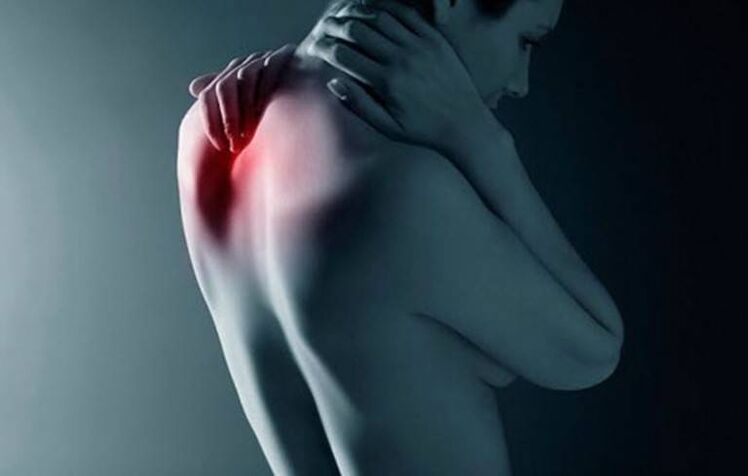
Can I warm up your neck?
It is impossible to warm the neck with compresses, special lamps and other means.Although in the first minutes, a person feels relief and the pain decreases, after an hour, they will return with revenge, accelerating the process of developing the disease.There is also a probability of strong swelling.
At the same time, it is necessary to prevent hypothermia from the neck, it is therefore recommended to wear scarves and warm clothes with high necklaces.
Can a circle be a circle of osteochondrosis?
Yes, since during the disease, blood flow to the brain decreases, which causes dizziness, as well as certain other symptoms.Lurin can be manifested differently, depending on the area sensitive to oxygen famine.A person can either observe how the walls and the floor move, or hear the sound of the blood in the ears and feel the pressure on the time share.
Can he headache?
Headache is one of the most common symptoms of neck osteochondrosis.Several varieties of pain are distinguished: migraine, burning in the parietal area, which extends to exaggerated arcs, acute pain, which rises from the spine to the crown and time pain.They can occur for various reasons, but they are all characteristic of osteochondosis.
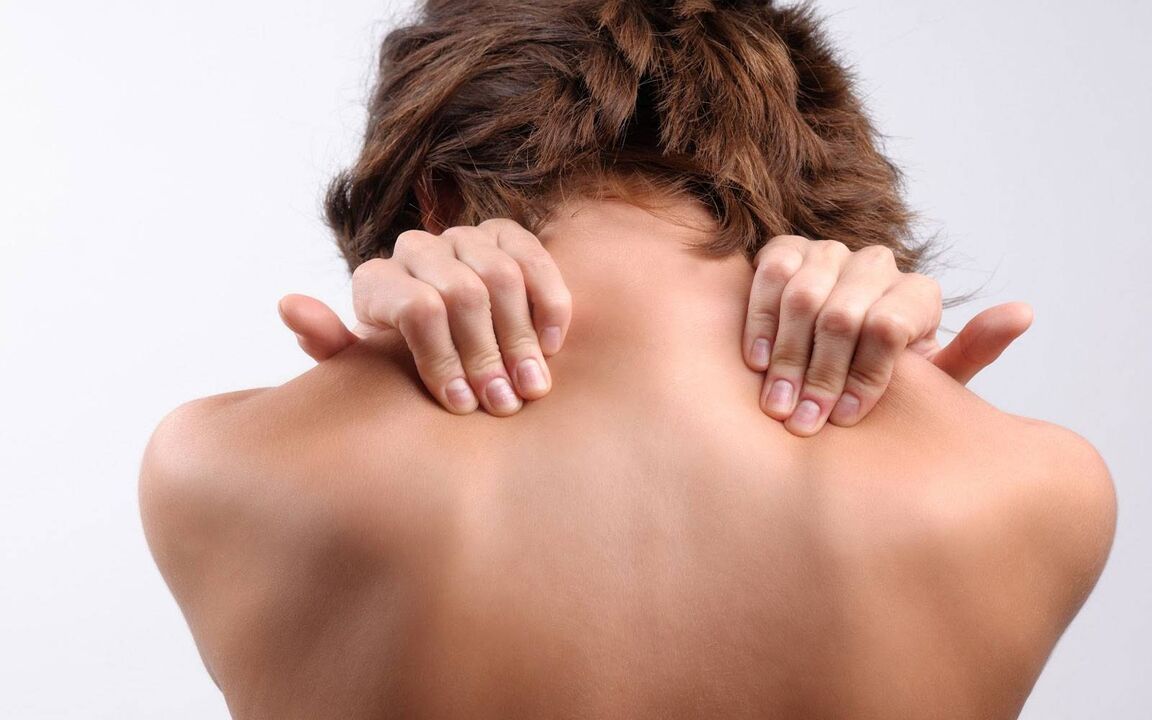
Prevention
Any disease is easier to prevent than treatment.The same rule applies to the osteochondrosis of the neck.To prevent disease, it is necessary to adhere to several rules:
- Physical activity.The most effective means of avoiding yoga and physiotherapy exercises will be to avoid the neck, but it is better to refuse two classes or two two -hour classes in the gymnasium.With a sedentary lifestyle, it is necessary to periodically organize a short break during the working day, during which you should get up from the chair and walk, knead your shoulders and your neck.It is advisable to avoid a sharp turn of the head.
- Organization of the workplace.A properly selected work chair and a table will help avoid neck pain.The chairs must be chosen with a high back so that it supports the spine, the table must be proportionate to your growth.The appropriate lighting and distance to computer will also help reduce the risk of illness.
- Organization of a berth.A healthy sleep takes as much time as a normalized working day, which means that it is necessary to worry about its convenience.The not too hard orthopedic mattress and a low pillow will be an excellent solution.
- Massage.It is not necessary to visit the masseur 3 times a week to support the neck and back to normal, you can learn to do self-massage.Thus, you will avoid the accumulations of salts in the cervical region and will support the muscles of the tone.
- A visit to a bath and a sauna.Although with osteochondrosis, it cannot warm the neck, the baths are shown in the form of a prevention, because it is a means of eliminating muscle spasms, as well as eliminating harmful toxins from the body that come out later.
- Appropriate nutrition.Very often, the lack of nutrients becomes a problem for the entire organism.Beans, spinach, fish, dairy products will help avoid pain in the cervical region.Everything that is saturated with calcium and phosphorus to strengthen the bones.
- Try not to additional neck.Take a rule not to wear heavy bags on the shoulder.
- Wear seasonal clothes, hypothermia or project can be a trigger for osteochondrosis.Do not forget the scarves and vests with a collar, do not stand long in the cold wind, turning your back towards it, find the shelter.
All these tips will not only help avoid osteochondrosis, but will also have a beneficial effect on the general condition of the body.



































